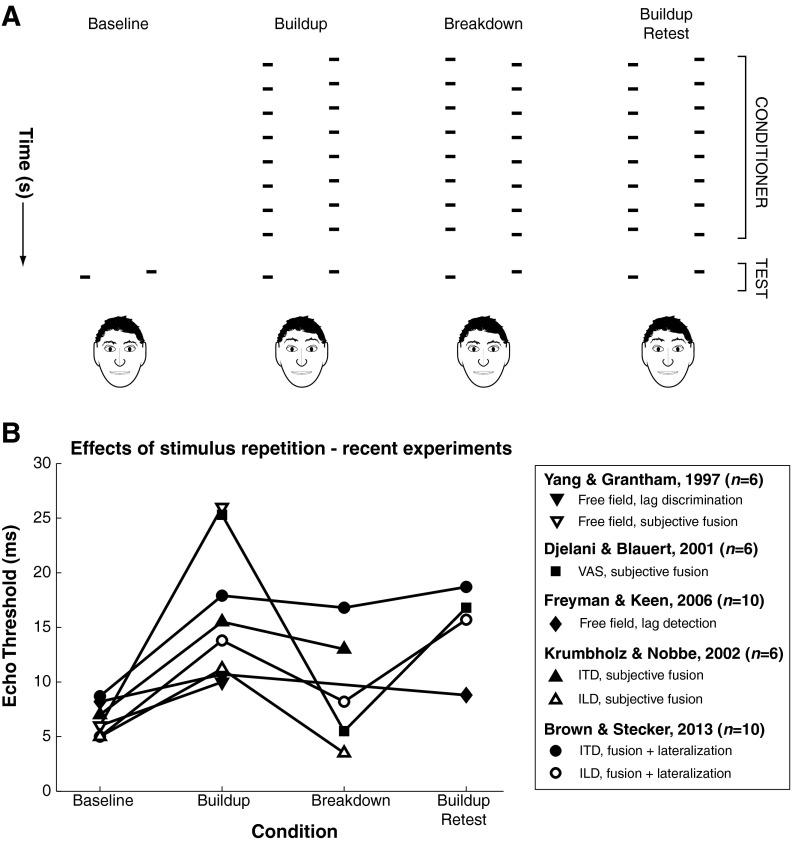FIG. 4.
Effects of repeated stimulus presentation on psychophysical measures of the precedence effect. A Four different stimulus configurations are illustrated. Time is illustrated schematically in the vertical dimension. Baseline stimuli, the configuration used in most studies of the precedence effect, consist of a single lead and lag pair. In this illustration, the lead carries spatial cues favoring the right ear (depicted as a mirror image), and the lag carries spatial cues favoring the left ear, imposed via one of the methods illustrated in Fig. 2. Buildup stimuli consist of a series of lead-lag pairs—a “conditioner” train—carrying spatial cues identical to the test pair, which is presented after a brief pause. Breakdown stimuli (of the type illustrated) consist of a conditioner train carrying spatial cues opposite those of the test stimulus, such that the test stimulus features a “switch” in lead and lag locations. Buildup Retest stimuli are identical to buildup stimuli, with the exception of an intervening lead-lag pair at the end of the conditioner train that carries spatial cues opposite the preceding conditioner pair and the proceeding test pair. B Mean “echo threshold” data are replotted from several experiments that have assessed precedence effects for two or more of the stimulus configurations illustrated in A. In all experiments, stimuli were brief broadband noise bursts or impulses. In general, stimulus repetition elevates echo thresholds, but several key findings are that: (1) Response paradigms that require explicit discrimination (Yang and Grantham 1997) of the lag location or detection of an image in the vicinity a visible lag loudspeaker (Freyman and Keen 2006) suggest lesser effects of buildup than subjective paradigms, which generally only require subjects to indicate whether one or two images were perceived. (2) Stimuli that are lateralized by virtue of ILD exclusively (Krumbholz and Nobbe 2002; Brown and Stecker 2013) tend to produce lower echo thresholds than free-field or ITD stimuli in particular. (3) Breakdown of the echo threshold, evidenced by a reduction of the echo threshold relative to the Buildup condition, tends to occur only when ILD cues are present; however, (4) for all cue types, echo thresholds generally remain elevated when the primary conditioner stimulus is presented as the test (e.g., following a “breakdown” stimulus in the Buildup Retest condition).

